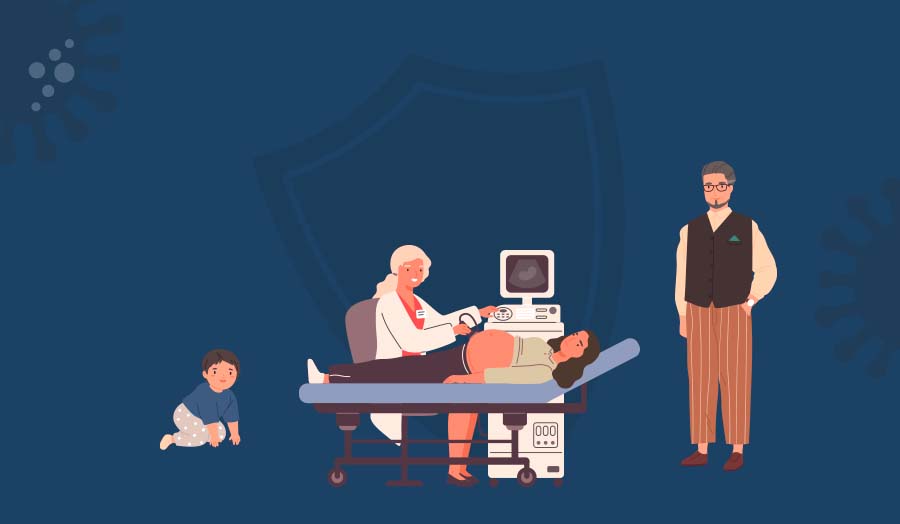Are you at risk of severe flu?
In a typical year, between 4 million and 50 million people across Europe catch a symptomatic case of the flu (1) – that’s a case of the flu with symptoms. Three times as many catch a case of the flu but experience no symptoms (1). Those who do experience symptoms typically get a fever along with a headache, muscle pain, sore throat, runny nose, non-productive cough and a general feeling of being unwell (1). And their systems usually last no longer than a few days (1).
But for some, the disease can become more severe. Some people contract an infection from the flu virus itself or a secondary bacterial infection, such as pneumonia (1). Other possible severe complications from the flu include inflammation of the heart muscle or the brain (1). And the flu could also exacerbate underlying chronic health conditions (1).
Who is most at risk of severe flu?
Older adults are our first group of people at greater risk of developing severe complications if they catch the flu. Older adults frequently have underlying diseases that reduce their resistance to infection, and their immune response may also be less effective (1). And while there is no sharp cut-off age for those most at risk, many European countries use 65 years as a threshold (2).
Our second group is people with long-term medical conditions – including diseases of the lung, heart, kidney or liver, neurological conditions and diabetes (1)(2)(3). It also includes people who have problems with their spleen or a weakened immune system (1)(2)(3), and people with any condition that compromises their respiratory functions (2).
Our third group, healthy pregnant women, are at greater risk than others of becoming hospitalised due to respiratory illness during the flu seasons (1). Hospitalisations are also more common in young children (1).
Protecting those most at risk
The flu vaccine is the best defence we have against the flu (4). The World Health Organization recommends that people who are most at risk of developing serious complications with the flu are vaccinated every year before the flu season begins (5).
Vaccinating people most at risk provides them with direct protection against the flu (6). Then if you also vaccinate any people they’re in close contact with, that offers them some additional protection. We call this indirect protection (6).
Indirect protection is important for two reasons:
- Flu vaccines work better in healthy children and adults than in older adults and people with chronic conditions (6).
- The young have an increased risk of being infected because they’ve not yet developed immunity to the virus (1). Therefore, the flu can spread easily in children’s daycare facilities and amongst school-age children (6).
So, vaccinating healthcare workers who are in contact with patients (2) and children and adolescents in addition to high-risk groups may reduce the overall spread of flu in the wider population (4)(6).
Are you at high risk of flu complications? If you are, getting your flu vaccine is especially important. Have you had yours?
Sources
(1) https://www.ecdc.europa.eu/en/seasonal-influenza/facts/factsheet
(2) https://www.ecdc.europa.eu/en/seasonal-influenza/prevention-and-control/vaccines/risk-groups
(3) https://www.nhs.uk/conditions/vaccinations/flu-influenza-vaccine/
(4) https://www.gov.uk/government/publications/flu-vaccination-in-schools/flu-vaccination-programme-2021-to-2022-briefing-for-schools
(5) https://www.euro.who.int/en/health-topics/communicable-diseases/influenza/vaccination
(6) https://www.ecdc.europa.eu/en/seasonal-influenza/prevention-and-control/vaccines/vaccination-strategies






Leave a comment